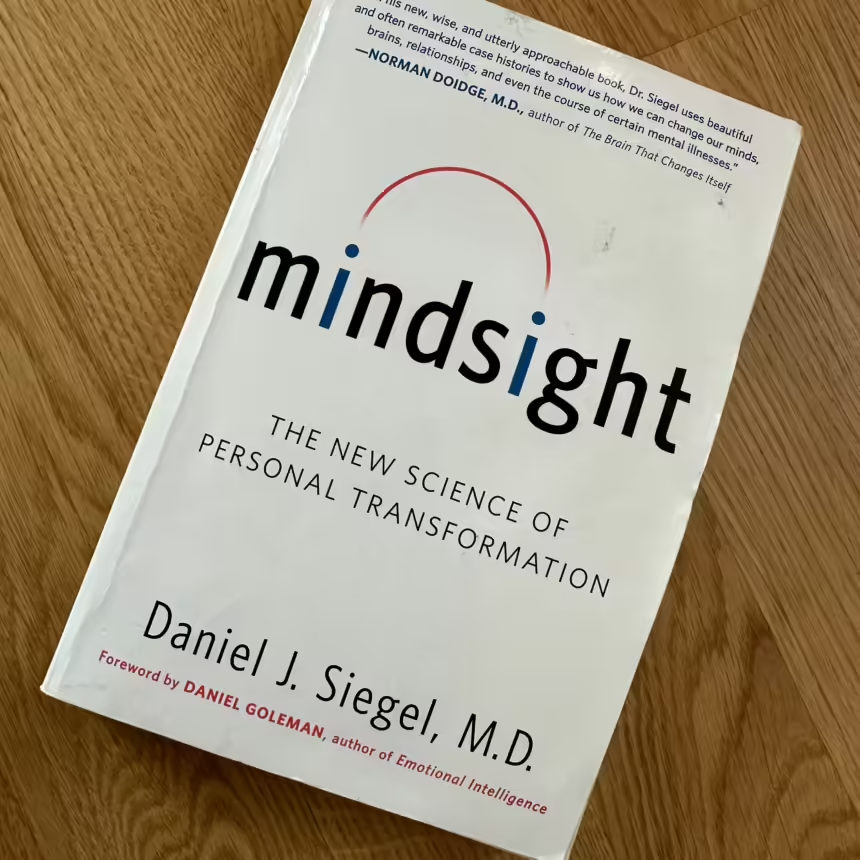Food for thought from my reading pile: “mindsight” by Daniel J. Siegel. In this little booklet, Siegel looks at how different levels of our body and brain interact with each other. Or not.
He outlines his – and our – vision of a good life. Siegel calls it “being in the flow”, and describes this flow vividly with the acronym “FACES“: F: Flexible (flexible in situations, in dealing with other people, etc.), A: Adaptive (adaptable to new requirements, challenges), C: Coherent (consistent), E: Energized (energetic), S: Stable (stable).
Based on decades of therapy experience, Siegel observed that people are not “in the flow” precisely when they are not “integrated” within themselves, for example when there are inner conflicts. inner conflicts, for example. This observation has since been confirmed by neuroscientific studies (brain scans).
The concept of the “integrated flow” also underlies our coaching practice. Like Siegel, we work with our clients on the following integrations (in order of relevance to our coaching practice):
- The integration of consciousness: Are we aware of ourselves and others? Are we mindful? On all channels? With the 4 senses, do we try to understand the thoughts, wishes and feelings of others and ourselves? Mindfulness for ourselves and for others is the basis for successful personal development. Creating more mindfulness – especially for ourselves – is very often a topic in our coaching.
- Horizontal integration: Our right hemisphere is responsible for networked thinking, images, non-verbal communication and much more. In contrast, the left hemisphere is responsible for linear thinking, logic, language, etc. Many of us are strongly “left-brained” – often due to our jobs. However, the brain hemispheres complement each other. Experience has shown that “right-brain” strengthening and horizontal integration brings a lot of energy and vitality into our lives. Very often a topic for our customers.
- The integration of ego states: Many people are not “one ego”, but have different egos, different states. Perhaps a rational, strong ego, structured, consistent. And another ego, an anxious ego, full of self-doubt. Each of these egos is associated with different behavioral patterns, some of which are very deeply rooted and automated. A major topic in many coaching sessions. Our conceptual basis for this is the ego parts of transactional analysis.
- Interpersonal integration: Can we enter into a deep, genuine relationship with employees, colleagues, managers, friends or our partner? Can we do this without giving up or denying ourselves? Or do we quickly go into attack or escape mode? This is an important topic in our coaching practice, which covers many other aspects, such as conflict management, communication and mindfulness. Conflict management, communication and mindfulness.
- Vertical integration: This is about the integration of body and mind, about the body vibrating together via the brain stem, limbic system and cortex. Body perception, perception of emotions and intellect resonate together. If this integration is weakened, life and perceptions feel empty and weak. Life is “grey in grey”, not colorful. Occasionally a topic in coaching, more often in therapy.
- The integration of our life story: It has been scientifically proven that children form strong, secure attachments to their parents precisely when their parents can tell a clear and coherent story of their childhood and adolescence. Do we give meaning to our life story? Or is there also disappointment, resignation, fear or anger within us? In our coaching, this integration is a topic at one point or another if it represents a blockage to personal development.
- The integration of memories: This is about repressed memories, feelings, thoughts. Sometimes there are pieces of the puzzle from our past working in our subconscious that we are not aware of, but which weigh on us. Making the repressed conscious, bringing drivers of our behavior to the surface is often part of our work. If such puzzle pieces are strong, if they have a traumatic character, then we recommend working on these aspects in therapy rather than coaching.
- Temporal integration: A rather rare topic in coaching practice – when fear of loss, of death – of others or of ourselves – paralyzes, blocks, terrorizes us. In this case, therapy is more about confronting these fears, integrating them and strengthening the person as a result.
Whether you are interested in personal development, leadership, professional development or simply psychology – feel inside yourself – where are you well integrated “with yourself”? Where would you like to grow further – through integration? We would be happy to accompany you!
You can find more articles on this topic here:
- Horizontal integration – logical and networked thinkingDo you seem rather unsympathetic, emotionless and sometimes “hard-core rational”? Do you feel empty, without a soul, the world is gray-on-gray? Perhaps your left and right brain hemispheres are not vibrating in harmony, perhaps strengthening your “horizontal integration” will help you.
- When is my life good?
When am I “in the flow”?What is actually a good life? When am I in the flow? How do I achieve contentment, happiness, peace? Where do I want to go? Mindsight: a very helpful conceptual framework!
- How many am I?
Or: Your ‘egogram evaluation’In the previous series, we described the types of “I” we know in coaching – and in real life. We have described individual types (the little dictator, the free spirit, the rebel, etc.) – and you may have recognized many of them. Now – thank God – we are not just boringly one-dimensional, but multi-layered beings. We ...
- How many am I?
Or: The imprisoned, deeply unhappy artist and free spiritDiscover how you can find balance and integration in your career as a free spirit and play to your strengths in the areas of creativity and innovation.
- How many am I?
Or: The rebel and the always bad worldDiscover how you can change your critical view of the world, become calmer and happier, and leave the role of victim.

